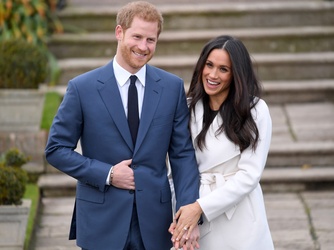Harry and Meghan: Ring in the New?
The engagement of Prince Harry and Meghan Markle is big news in the UK—and the US. Americans are often pretty indifferent to royal goings-on. We founded our country on an anti-royalist stance, after all, and the legacy endures in our deep suspicion of titles that are inherited, aristocratic and “elitist” versus earned (Donald Trump happened here not only because of retrograde nationalist fervor and a backlash against women and people of color but because he was able to pass himself off as a gold-plated, self-made billionaire who supposedly “earned it.” Even though his wealth and privilege were intergenerational, passed down from Dad).
But Meghan and Harry give us something that Diana and Charles and William and Kate have not. Many Americans are thrilling to the “modernity” of this couple—Markle is a working American actress and philanthropist. She is beautiful, accomplished, biracial, and divorced. That this American woman has been chosen by Prince Charming feels, for many of us, like a long overdue update. And payback for all the passive, lily-white, virginal princesses of yore.
Markle’s engagement ring is a mash up of the traditional and the new—a diamond from Botswana, where Markle and her prince vacationed together early in their relationship, set between two sparklers that Princess Diana once wore.
Now imagine if there were no ring. There might be outrage, in this case, that Prince Harry did not “value” his bride-to-be. But why? And is that actually what an engagement ring is “about”? Isn’t it funny that men don’t wear engagement rings? Why is it that women advertise their “taken” status during the liminal period before marriage, but men do not? As to the suggestion that such a practice is ‘just logical” or “only natural” because men used to be the breadwinners, we might ask, Why does it persist? And what does it say about us that it does?
The engagement ring, a semaphore of being claimed, may be beautiful, and a sign of a man’s commitment to a woman. Traditionally, it was also a hedge against being left high and dry. If he fled, she had the jewel, which had not just symbolic but actual value.
That the asymmetrical tradition of who wears an engagement ring persists isn’t just a matter of tradition, though. It is message, and an assertion. And proof that, even in this age of women making progress in closing the wage and education gaps, asymmetries both obvious and subtle persist. Including who advertises (and gets a status bump from) being “claimed.” Change is on the horizon. What role might traditions like the engagement ring play in countering it?
